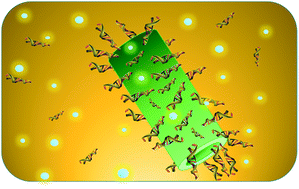Layer-by-layer assembled protein nanotubes with high DNA affinity
Abstract
In this research, protein nanotubes with high affinity for DNA molecules were prepared by alternate layer-by-layer (LbL) assembly of human serum albumin (HSA) and polyethylenimine (PEI). The well-defined hollow cylinder (PEI/HSA)5PEI nanotubes with outer diameter 455 ± 13 nm, inner diameter 275 ± 35 nm, wall thickness 151 ± 7 nm and length 5.6 ± 0.9 μm were characterized by scanning electron microscopy (SEM), transmission electron microscopy (TEM), Fourier transform infrared spectroscopy (FT-IR) and energy dispersive spectroscopy (EDS). Under optimal conditions, the maximum adsorption capacity of protein nanotubes for polyA25 was 606.0 mg g−1, which was far higher than the reported nanoparticles. The rates of adsorption were found to conform to the pseudo-second-order kinetics and intra-particle diffusion models with good correlation. The equilibrium adsorption data fitted well with the Langmuir isotherm model. The DNA release from DNA/(PEI/HSA)5PEI nanotubes was associated with the ionic strength and pH in the solution.


 Please wait while we load your content...
Please wait while we load your content...